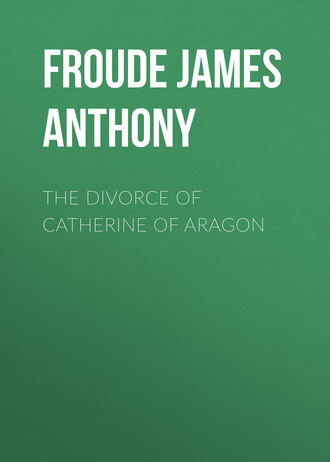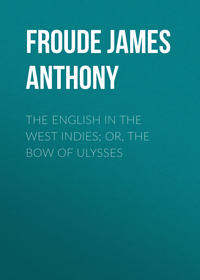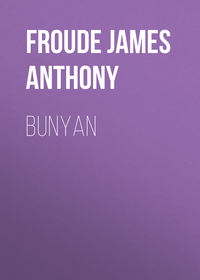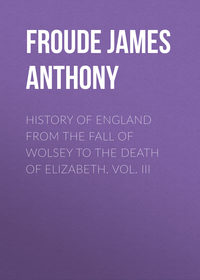 полная версия
полная версияThe Divorce of Catherine of Aragon
393
Calendar, Foreign and Domestic, June 2, vol. x. p. 428.
394
Daughter of Sir Anthony Brown, Master of the Horse.
395
John Husee to Lady Lisle, May 24, 1536. —Calendar, Foreign and Domestic, vol. x. p. 397.
396
Chapuys to Charles V., April 29. —Spanish Calendar, p. 105.
397
Ibid.
398
History of England, vol. ii. p. 454.
399
Chapuys to Charles V., May 19, 1536. —Spanish Calendar, vol. v. part 2, p. 125.
400
Chapuys to Charles V., May 2, 1536. —MSS. Vienna; Calendar, Foreign and Domestic, vol. x. p. 330; Spanish Calendar, vol. v. part 2, p. 107.
401
In transcribing the MS. twenty years ago at Vienna I mistook the name for Howard, which it much resembled in the handwriting of the time. I am reminded correctly that there was no Viscount Howard in the English Peerage.
402
“Le Visconte Hannaert a escript au Sr de Granvelle que au mesme instant il avoit entendu de bon lieu que la concubine du dict Roy avoit esté surprise couchée avec l’organiste du dict Roy.”
403
The Earl of Northumberland to Cromwell, May 13, 1536. —Calendar, Foreign and Domestic, vol. x. p. 356.
404
Cromwell to Gardiner, July 5, 1536. —Calendar, Foreign and Domestic, vol. xi. p. 17.
405
History of England, vol. ii. p. 470.
406
Sir Henry Wyatt to Thomas Wyatt, May 7, 1536. —Calendar, Foreign and Domestic, vol. x. p. 345. “Him” refers to Cromwell.
407
History of England, vol. ii. pp. 459-462.
408
Calendar, Foreign and Domestic, vol. x. p. 430.
409
Calendar, Foreign and Domestic, vol. x. p. 357.
410
Autograph letter of Sir Francis Weston, May 3, 1536. —Calendar, Foreign and Domestic, vol. x. p. 358.
411
Cromwell to Wallop and Gardiner, May 14, 1536. —Calendar, Foreign and Domestic, vol. x. p. 359.
412
“Qu’elle avoit faict empoissoner la fene Royne et machyné de faire de mesme à la Princesse.” Chapuys was not present, but was writing from report, and was not always trustworthy. No trace is found of these accusations in the Record, but they may have been mentioned in the pleadings.
413
“Que le Roy n’estoit habille en cas de copuler avec femme, et qu’il n’avoit ni vertu ni puissance.” Historians, to make their narrative coherent, assume an intimate acquaintance with the motives for each man’s or woman’s actions. Facts may be difficult to ascertain, but motives, which cannot be ascertained at all unless when acknowledged, they are able to discern by intuition. They have satisfied themselves that the charges against Anne Boleyn were invented because the King wished to marry Jane Seymour. I pretend to no intuition myself. I do not profess to be wise beyond what I find written. In this instance I hazard a conjecture – a conjecture merely – which occurred to me long ago as an explanation of some of the disasters of Henry’s marriages, and which the words, alleged to have been used by Anne to Lady Rochford, tend, pro tanto, to confirm.
Henry was already showing signs of the disorder which eventually killed him. Infirmities in his constitution made it doubtful, both to others and to himself, whether healthy children, or any children at all, would in future be born to him. It is possible – I do not say more – that Anne, feeling that her own precarious position could only be made secure if she became the mother of a prince, had turned for assistance in despair at her disappointments to the gentlemen by whom she was surrounded. As an hypothesis, this is less intolerable than to suppose her another Messalina. In every instance of alleged offence the solicitation is said to have proceeded from herself, and to have been only yielded to after an interval of time.
414
“Au grand despit de Cromwell et d’aucungs autres qui ne vouldroient en cest endroit s’engendroit suspicion qui pourroit prejudiquer à la lignée que le dict Roy pretend avoir.” —MSS. Vienna.
415
Chapuys to Charles V., May 19, 1536. —MSS. Vienna; Spanish Calendar, vol. v. part 2, pp. 122 et seq. In one or two instances my translation will be found to differ slightly from that of Sr Gayangas.
416
Chapuys to Charles V., May 19. —Spanish Calendar, vol. v. part 2, p. 128.
417
History of England, vol. ii. p. 483.
418
Wriothesley’s Chronicle (Camden Society’s Publications), vol. i. p. 39.
419
Constantine’s Memorial. —Archæologia, vol. xxiii. pp. 63-66.
420
Calendar, Foreign and Domestic, June 2, vol. x. p. 430.
421
Ibid. p. 431.
422
Kingston to Cromwell, May 16, 1536. —Calendar, Foreign and Domestic, vol. x. p. 371.
423
28 Hen. VIII. cap. 7.
424
Chapuys to Granvelle, May 19, 1536. —Calendar, Foreign and Domestic, vol. x. p. 380.
425
Wriothesley’s Chronicle, vol. i. pp. 40, 41.
426
Chapuys’s words are worth preserving. He was mistaken in his account of the Statute. It did not declare Mary legitimate, and it left Henry power to name his own successor should his marriage with Jane Seymour prove unfruitful. So great an error shows the looseness with which he welcomed any story which fell in with his wishes. He says: “Le statut declairant la Princesse legitime heretiere, la fille de la Concubine, a esté revoqué, et elle declairé bastarde, non point comme fille de M. Norris, comme se pouvoit plus honnestement dire, mais pour avoir esté la marriage entre la dicte Concubine et le dict Roy illegitime à cause qu’il avoit cogneu charnellement la sœur de la dicte Concubine: pour laquelle cause l’Archevesque de Canterburi, ung ou deux jours avant que la dicte Concubine fut executée, donna et prefera la sentence de divorce, de quoy, comme sçavez trop mieulx, n’estoit grand besoign, puisque l’epée et la mort les auroit prochainement et absolument divorcés: et puisque aussy le vouloient faire, le pretext eust esté plus honneste d’alleguer qu’elle avoit este mairée à aultre encores vivant. Mais Dieu a voulu descouvrir plus grande abomination, qui est plus que inexcusable actendu qu’il ne peut alleguer ignorance neque juris neque facti. Dieu veuille que telle soit la fin de toutes ses folies!” Chapuys à Granvelle, July 8, 1536. —MS. Vienna.
427
This was distinctly laid down in the case of Catherine Howard.
428
Wriothesley’s Chronicle, pp. 41, 42.
429
“Le Roy respondit qu’il avoit trop experimenté en la dicte Concubine, que c’estoit de la nourriture de France.” Chapuys à l’Empereur, June 6. —MS. Vienna.
430
“Me dict qu’icelluy Baily de Troyes et l’autre Ambassadeur avoient proposé le mariage de l’aisnée fille de France avec ce Roy, mais que c’estoit peine perdue. Car ce Roy ne se marieroit oncques hors de sou royaulme, et, luy demandant raison pourquoy, il m’en dit avec assez mine assurance que se venant à mesfaire de son corps une Reine estrangere qui fut de grand sang et parentage, l’on ne pourroit chastier et s’en faire quitte comme il avoit fait de la derniere,” Chapuys à l’Empereur. —MS. Vienna, June 6.
431
Charles V. to Chapuys, May 15, 1536. —MS. Vienna; Calendar, Foreign and Domestic, vol. x. p. 370.
432
“Qui à la verité est une musique de hault genre et digne de rire.”
433
MS. Vienna.
434
Chapuys to Granvelle, May 19, 1536. —Calendar, Foreign and Domestic, vol. x. p. 380.
435
“In causâ matrimonii et in consistoriis et publice et privatim apud Clementem VII. se omnia quæ potuit pro vestrâ Majestate egisse: et Bononiæ Imperatori per horas quatuor accurate persuadere conatum fuisse, non esse Majestatem vestram per illam causam impugnandam.” Sir Gregory Casalis to Henry VIII., May 27, 1536. —Calendar, Foreign and Domestic, vol. x. pp. 406 et seq.
436
Cromwell, writing to Gardiner to inform him of the marriage, said that “the nobles and Council upon their knees had moved him to it.” If their entreaty had been no more than a farce, Cromwell would hardly have mentioned it so naturally in a private letter to a brother Privy Councillor. —Calendar, Foreign and Domestic, vol. xi. p. 16.
437
Chapuys to Charles V., May 19, 1536. —Calendar, Foreign and Domestic, vol. x. p. 378.
438
John Husee to Lord Lisle, May 19. —Calendar, Foreign and Domestic, vol. x. p. 385.
439
The Princess Mary to Cromwell, May 26, 1536. —Calendar, Foreign and Domestic.
440
Chapuys to Charles V., June 6. —Calendar, Foreign and Domestic, vol. x. p. 440; Spanish Calendar, vol. v. pp. 137 et seq.
441
Charles V. to Chapuys, June 30, 1536. —Calendar, Foreign and Domestic, vol. x. p. 511.
442
Calendar, Foreign and Domestic, June 6, 1536, vol. x. p. 389.
443
Chapuys to Charles V., June 6, 1536. —Calendar, Foreign and Domestic, vol. x. p. 441.
444
Chapuys to Charles V., July 1, 1536. —Spanish Calendar, vol. v. part 2, pp. 184 et seq.
445
Chapuys to Charles V., July 8, 1536. —Spanish Calendar, vol. v. part 2, p. 221. In using the words, “Princess of Wales,” Chapuys adds a curious fact, if fact it be – “Nowhere that I know of,” he says, “is the title of Princess given to a King’s daughter as long as there is hope of male descent. It was the Cardinal of York who, for some whim or other of his own, broke through the rule and caused Henry’s daughter by Catherine to be called ‘Princess of Wales.’”
446
Cifuentes to Charles V., August 4, 1536. —Spanish Calendar, vol. v. part 2, p. 221.
447
Chapuys to Charles V., August 12, 1536.






